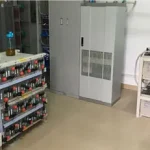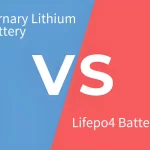Solar Charge Controller: The Essential Brain of Your Solar Power System
Solar Charge Controller: The Essential Brain of Your Solar Power System
When building a solar power system, most people focus on solar panels and batteries, but there’s a critical component that often gets overlooked: the solar charge controller. This intelligent device serves as the brain of your solar setup, managing the flow of electricity from your solar panels to your batteries while protecting your entire system from damage.
What is a Solar Charge Controller(mppt)?
A solar charge controller, also known as a solar regulator, is an electronic device that regulates the voltage and current coming from solar panels going to the battery. Without a proper solar charge controller, your batteries could be overcharged during the day or excessively drained at night, significantly reducing their lifespan and potentially creating safety hazards.
Why Every Solar System Needs a Solar Charge
The primary function of any solar charge controller is to prevent battery overcharging. When solar panels produce more electricity than your batteries can handle, the excess energy can cause the battery electrolyte to boil, leading to permanent damage and reduced battery capacity. A quality solar charge controller monitors battery voltage and reduces or stops charging when the battery reaches full capacity.
Modern solar charge controllers also provide reverse current protection. At night, when solar panels aren’t producing electricity, batteries could potentially discharge back through the panels. A solar charge controller prevents this reverse current flow, ensuring your stored energy remains available when you need it.
Types of Solar Charge
PWM (Pulse Width Modulation) Controllers
PWM solar charge controllers are the more affordable option and work well for smaller systems. They function by slowly reducing the amount of power applied to the batteries as they approach full charge. While PWM controllers are reliable and cost-effective, they’re less efficient than their MPPT counterparts, typically operating at around 75-80% efficiency.
MPPT (Maximum Power Point Tracking) Controllers
MPPT solar charge controllers represent the gold standard in solar regulation technology. These intelligent devices continuously track the maximum power point of your solar array, adjusting voltage and current to extract the maximum possible power from your panels. MPPT controllers can be up to 30% more efficient than PWM controllers, especially in cold weather or when there’s a significant voltage difference between your solar panels and batteries.
Key Features to Look for in a Solar Charge
Proper Sizing and Capacity
Choosing the right size solar charge controller is crucial for system performance. The controller must be able to handle the maximum current from your solar array. Most manufacturers recommend adding a 25% safety margin to your calculated maximum current to ensure reliable operation and account for unexpected conditions.
Temperature Compensation
Advanced solar charge controllers include temperature sensors that adjust charging parameters based on battery temperature. This feature is essential because battery charging characteristics change with temperature. Cold batteries require higher charging voltages, while hot batteries need lower voltages to prevent damage.
Load Control and Monitoring
Many modern solar charge controllers include load control terminals that allow you to connect DC loads directly to the controller. These controllers can automatically turn loads on and off based on battery voltage or time settings. Some advanced models also feature comprehensive monitoring systems with digital displays showing system status, battery voltage, charging current, and energy production.
Installation and Maintenance Tips
Proper Wiring and Placement
When installing your solar charge controller, ensure it’s placed in a well-ventilated area away from direct sunlight and moisture. Use appropriately sized cables to minimize voltage drop between components. Always follow the manufacturer’s instructions for wiring sequence to prevent damage to the controller or other system components.
Regular System Checks
While solar charge controllers are generally maintenance-free, regular system checks are recommended. Monitor the controller’s display or indicators to ensure it’s functioning correctly. Check connections periodically for corrosion or looseness, and keep the controller clean and free from dust buildup.
Choosing the Right Solar Charge Controller for Your Needs
The choice between PWM and MPPT solar charge controllers depends on several factors. For small systems with matched solar panel and battery voltages, PWM controllers offer excellent value. For larger systems, systems with higher voltage solar arrays, or installations in colder climates, MPPT controllers provide significant efficiency gains that justify their higher cost.
Consider your budget, system size, climate conditions, and future expansion plans when selecting a solar charge controller. Many experienced solar installers recommend investing in a slightly larger controller than currently needed to accommodate future system upgrades.
Conclusion
A solar charge controller is not just an optional accessory but an essential component of any reliable solar power system. By properly regulating battery charging, preventing overcharging and reverse current, and optimizing energy harvest, a quality solar charge controller protects your investment and ensures maximum system performance. Whether you choose a basic PWM model or an advanced MPPT controller, this critical device will serve as the intelligent guardian of your solar energy system for years to come.
Remember that the right solar charge controller can make the difference between a system that performs optimally for decades and one that requires frequent battery replacements and maintenance. Invest in a quality solar charge controller that matches your system requirements, and enjoy the peace of mind that comes with knowing your solar investment is well-protected.





